(单词翻译:单击)
Since the world began, we have been surrounded by mysteries. Some are solved by science, but others remain unexplained and might stay unsolved forever. Some are as ancient as humanity, but our fascination with them keeps them timeless. Here are ten such historical unsolved mysteries, to both entertain you and make you wonder.
世界伊始,我们便已被谜团所包围。一些谜团为科学所解决,但仍有些谜团无从解释并可能永远无法解开。这些谜团和人类一样古老,但我们对他们的痴迷却使他们历久弥新。这里就有十个既能愉悦你,又能让你产生求知欲的谜团。
10.The Fate of Hitler's Stolen Wealth
10.希特勒偷来的财宝的下落
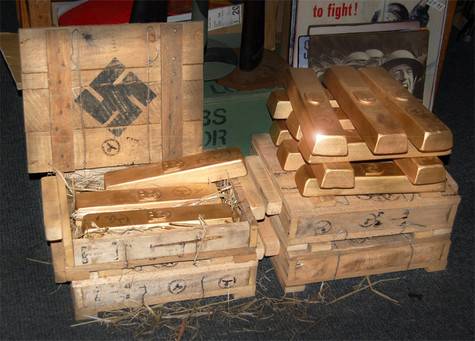
This is supposedly the greatest and biggest cache ever: an unimaginable hoard of looted gold bars, jewelry, and foreign currency, with an estimated value of $4 billion. These stolen riches disappeared in the blink of an eye from the vaults of the German Reichsbank. In the decades after World War II, troves of looted valuables were found in Portugal, Switzerland, Turkey, Spain, and Sweden, but they hardly compare in value to Hitler's supposed hoard.
据称这是有史以来最好最大的宝库:被掠夺的金条,珠宝和外币多得难以想象,价值在四十亿左右。这些偷来的财宝眨眼间便消失在德国国家银行。二战后的几十年里,这些抢劫来的贵重物品在葡萄牙、瑞士、土耳其、西班牙和瑞典都有发现。但这些发现几乎不能与所估计的希特勒宝藏相媲美。
Groups all over the world are still hunting for his treasure, but even after all these years, the question remains: Where is the gold of Hitler? The only sure thing is that the mystery of the treasure remains unsolved, with all its rumors, speculations, and myths still entwined around it. One of the most popular beliefs is that Hitler himself buried it in a secret location somewhere in Deutschneudorf, Germany. Some treasure hunters believe that the plunder is lying at the bottom of Lake Toplitz in Austria, while others suggest that it's stashed in banks around the world. The only certain thing is that, when there's nothing but speculation about the location of a $4 billion treasure, it grows into a legend.
世界上仍有很大一批人在寻找着这份宝藏,但即使这么多年过去了,疑问仍然存在:希特勒的宝藏究竟在哪?在谣言、猜测和神话的裹挟下,唯一能够确定的是宝藏之谜仍待解决。最为大众所接受的看法之一是,希特勒自己把它埋在德国多伊茨希诺伊多夫的某个地方。一些寻宝者认为这些掠夺品正安睡在奥地利的托普利兹湖中,然而另外一些人则认为它被藏匿在世界各地的银行中。唯一肯定的是,当我们只能通过猜测来获悉这份价值四十亿宝藏的位置时,它也就逐渐成为一个传说。
9.The Disappearance of the USS Cyclops
9.美国海军"独眼巨人号"的失踪
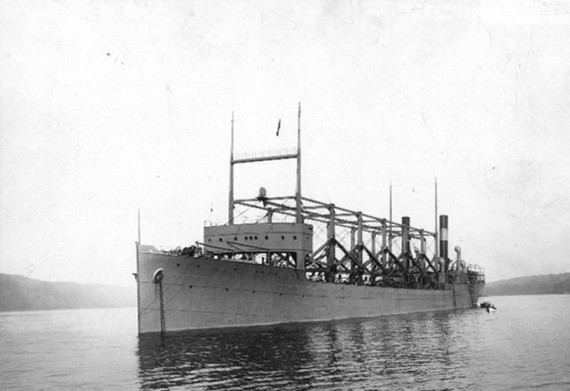
The Bermuda Triangle is famous for mysterious disappearances that have taken place there over the years. Even though scientists are nowadays able to provide logical explanations for most of the disappearances in that area, some have never been explained, including the unsolved disappearance of the USS Cyclops, a Proteus-class collier of the US Navy.
百慕大三角因历年来频繁发生离奇失踪事件而闻名。尽管当今科学家能够为这一地区的多起失踪事件提供合理的解释,但仍有一些疑团尚待解决,这里面就包括美国海军Proteus级别的货轮"独眼巨人号"的失踪。
During the First World War, the USS Cyclops was sent to Brazil to fuel British ships in the South Atlantic. Returning from Rio de Janeiro, she made a brief stop at the island of Barbados, then departed for Baltimore on the 4th of March, 1918. From that time forward, no one saw or heard anything about the Cyclops ever again. The crew and all 306 passengers vanished once and for all, and no trace of them or the ship has ever been found. It remains the single largest non-combat loss of life in U.S. Naval history. Even though American Naval authorities have tried for years to give a logical explanation, the disappearance remains an absolute mystery with many unanswered questions.
在第一次世界大战期间,美国海军"独眼巨人号"被派往巴西为南大西洋的英国船只补充燃料。它从里约热内卢出发,在巴巴多斯岛短暂停留,然后在1998年3月4日启程前往巴尔的摩。从那时起,没人再见到或听到与之相关的信息。船员和船上的306名乘客彻底消失了,没有找到他们的任何踪迹。这是美国海军史上唯一的也是最大的非战争死亡。虽然多年来美国海军官方一直致力于给出一个合理的解释,但这次失踪事件仍与许多悬而未决的问题一样成为难解之谜。
8.Locating the Remains of Christopher Columbus
8.克里斯多弗·哥伦布遗骸的安放处
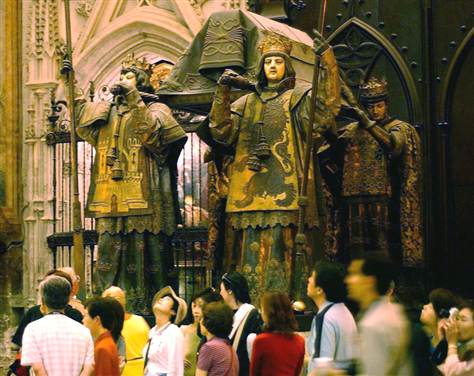
Christopher Columbus is probably the most famous explorer of all time, and we know pretty much everything about his life — except for one mystery: After his death in 1509, his remains continued to travel, and we don't know where they ended up. Originally buried in the Spanish city of Vigiadolid, in 1537 his bones were transferred to the island of Hispaniola in the Caribbean, in accordance with his wishes. But when the Spanish lost the region to the French in 1795, his remains were transferred to Cuba, where they stayed until the Spanish-American war. They were eventually returned to Seville, Spain, in 1898.
克里斯多弗·哥伦布可能是有史以来最著名的探险家,我们对他的生平也了解颇多——除了一个谜团仍待解决:他在1509年死去之后,他的遗骸仍继续航行,其最终去向尚未可知。它的遗骸最初埋藏在西班牙城市巴亚利多德 ,1537年根据他生前意愿,其遗骸被转移至加勒比海的伊斯帕尼奥拉岛。但是在1795年西班牙将这个地区割让给法国时,他的遗骸又被运往古巴,直到1898年美西战争爆发,他才最终被送回西班牙的塞维利亚。
The Dominican Republic's official version, however, claims that the remains of Columbus never left Hispaniola. In 1877, in the Cathedral of Santo Domingo, a box was discovered bearing an inscription stating that the remains inside were those of the "glorious and eminent Cristobal Colon." A DNA analysis conducted on the bones in Seville, and on those of Columbus's brother Diego (who is buried in the same city) showed that the two samples matched perfectly. When researchers announced these findings in 2006, the controversy surrounding Columbus's earthly remains should have come to a definitive end. However, the Dominican Republic openly challenges the results of the DNA testing, and for years has demanded a DNA analysis of the bones in Hispaniola, leaving open a window of doubt.
然而,多米尼加共和国的官方却声称哥伦布的遗骸从未离开过伊斯帕尼奥拉岛。1877年,在圣多明各大教堂发掘出一个盒子。盒子上的题名表明盒里的遗骸属于"杰出和尊贵的人——克里斯多弗·哥伦布"。研究人员对塞维利亚的哥伦布遗骸和哥伦布弟弟迭戈(被葬于同一城市)遗骸进行DNA对比,发现两者的DNA完全吻合。当研究人员将这些发现在2006年公之于世时,关于哥伦布遗骸下落之争本应完美收尾,但多米尼加共和国却公然挑战这份DNA测试结果,并且多年来一直要求对伊斯帕尼奥拉岛的遗骸也进行DNA检测,这也就为后世留下了一个未解之谜。
7.Secrets of the Phaistos Disc
7.费斯托斯圆盘之谜
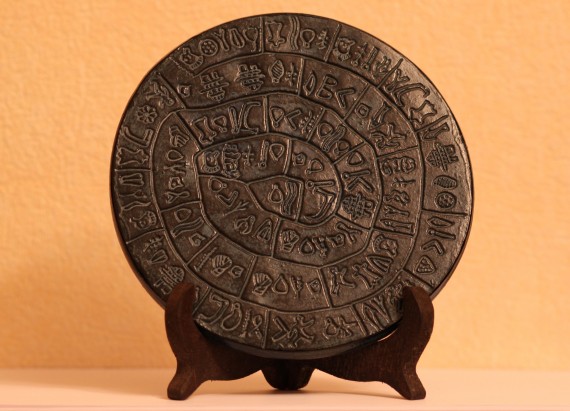
The Minoan Civilization is considered by most historians to be the first organized Western civilization, and it has been named "the first link in the European chain." The Phaistos Disc, which was discovered in 1908 by Italian archaeologist Luigi Pernier in the ancient city of Phaistos, gave hope to even the least optimistic among us that it would help us understand the Minoan civilization in more detail.
米诺亚文明被大多数历史学家认为是最早的有组织的西方文明,并一直被称为"欧洲链条上的第一个环节"。费斯托斯圆盘于1908年在古城费斯托斯被意大利考古学家路易吉·裴涅尔发现,这个发现让我们有希望更详细地了解米诺亚文明,哪怕这种希望是最不乐观的。
But the Phaistos Disc is a global conundrum that has kept its secrets hidden for thousands of years. Suggestions about what its inscription means include a hymn, a prayer, a geometric theorem for the calendar, and the narrative of a story. However, the global scientific community has not been able to confirm any of these. After decades of research, a diverse team of scientists intensively studying the Minoan language and the text of the Phaistos Disc may have come close to solving one of the biggest mysteries of archaeology, but so far the Disc remains an absolutely unsolved mystery.
但是费斯托斯圆盘却是一个困扰人类千年的世界性难题。有人认为它上面的符号代表着赞歌、祈祷、历法的几何定理以及一些故事。但世界上还没有科学家能够确认这些符号。也许几十年以后,一些深入研究米诺亚语言和费斯托斯圆盘符号的专业科学家能够解决这个困扰考古界的最大谜团,但目前为止,这个圆盘仍是一个未解之谜。
6.The "Wow!" Signal
6."Wow!"讯号之谜
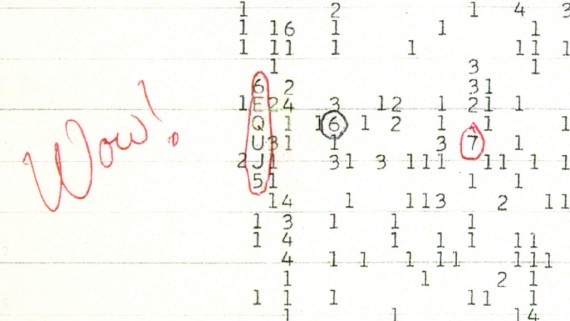
On August 15, 1977, astronomer Jerry Ehman, working on a SETI project at Ohio Wesleyan University's Perkins Observatory, glanced as usual at the prints generated by the radio telescope known as the "Big Ear," but what he saw this time made him write "Wow!" on the printout. But what did he see exactly that caused such a reaction? According to him, it was the strongest, clearest, and most significant signal ever recorded, and a unsolved mystery that astronomers have been debating for decades.
1977年8月15日,天文学家杰瑞·艾曼在俄亥俄州卫斯理公会派大学的一个搜寻地外文明项目中,如往常一样查看由"大耳朵"电波望远镜留下的报表,但这时他根据所看到的内容在稿纸之外写下"Wow!"。他究竟看到了什么,使他有如此反应?据他所言,这个讯号是有史以来最强大、最清晰、也是最重要的,这也成了天文学家数年来一直争论的谜团。
That was thirty-six years ago, and still no one knows what caused the signal or where it came from exactly. The scientific world is unable to provide a clear explanation, strengthening the myth surrounding this case. Even skeptics now wonder if the signal could have been the first human contact with extraterrestrial life.
36年前,没人知道这个信号如何而来以及来自何方。科学界也未能提供一个合理的解释,这也就让这事变得越发扑朔迷离。现在甚至有人怀疑这个信号是人类与外星生命的第一次接触。
翻译:李念 来源:前十网


